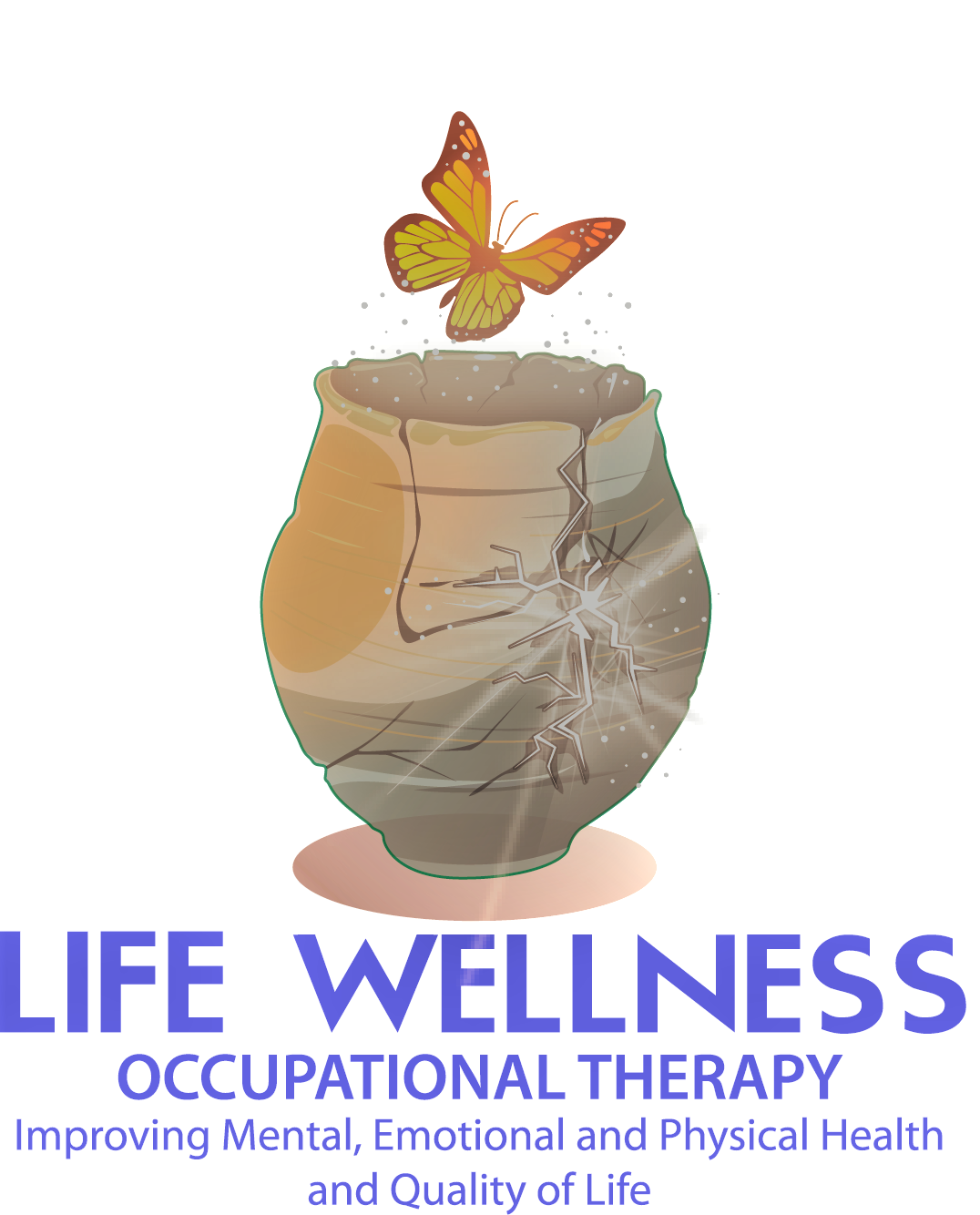so What is an
Occupation?
An occupation is anything someone wants to do or needs to do in their life including activities of daily living such as self-care (dressing, bathing, and eating) and instrumental activities of daily living such as rest, sleep, leisure, social participation, home management (budgeting, cooking, grocery shopping, laundry), work, school and play (American Occupational Therapy Association [AOTA]. 2014)
What is
Occupation Therapy?
Occupational therapy provides therapeutic services to develop or increase engagement in activities for the purpose of enabling or improving participation in habits, routines in the home, school, workplace community and other settings and roles within a family or community (AOTA, 2014). Occupational therapy practitioners use their knowledge of the relationship between the person and the engagement in meaningful occupations, activities, and tasks, and the context to develop occupation-based intervention plans to develop growth in the individual. Areas of growth may include body functions, values, beliefs and skills such as social interaction, motor, and processing. Occupational therapy’s main concern is positive results and outcomes and thus may include rehabilitation and habilitation while promoting health and wellness emotionally, mentally and physically (AOTA, 2014).
PT or OT
What’s the Difference?

Physical Therapy (PT) or Occupational Therapy (OT)…. What’s the Difference?
Both physical therapy and occupational therapy are vital and have their roles in increasing a person’s life’s quality and satisfaction. Some services may overlap, but both to the most part are different, therefore, it is important to understand the differences because, many times, when a person gets injured or has a decline in function, the doctor orders PT for the patient not realizing that the patient could benefit from OT services as well.
Physical Therapy uses evidence-based methods to restore, maintain and promote optimal physical function, fitness, and wellness as it relates to movement and health. PT’s goals are to prevent the onset, symptoms, and progression of disabilities and impairments that may have resulted from injuries, disorders, conditions, and diseases (American Physical Therapy Association, 2019). However, there are times when a person’s condition is progressive or due to the nature of the condition or injury, the client may take a while to heal, but they still need to perform certain functions, tasks, and activities.
This is where OT comes in….
Occupational Therapy uses evidence-based approaches that are holistic focusing on how a person functions and the barriers that are keeping a person from performing or completing a task or activity that he or she desires (AOTA, 2014). Many factors are taken into account such as the person’s emotional, mental, and physical health and wellness and life satisfaction. In addition, the client’s environment and actual daily activities are also assessed so that OT can develop a plan that increases independence. OT aims to restore the client to independence even if it is modified through adapting the environment or using devices (AOTA, 2014). If a person is unable to achieve complete independence, OT develops interventions and goals to increase independence as much as possible. Many times, caregivers are also a part of this process. Therefore, Occupational Therapy practitioners also instruct, educate and train caregivers to increase care and safety of their loved ones while also performing self-care to decrease the risk of burnout (AOTA, 2014).
A Little Bit of history
Occupational Therapy

In 1917, a little over 100 years ago, occupational therapy (OT) was founded in mental health. OT was considered an essential part of treatment for people who were institutionalized due to psychiatric disorders (AOTA, 2011); and therefore, the OT profession grew in the Moral Treatment era, a time where ideas were based on humane treatment for people with psychiatric disorders. OT’s mission was to provide people with occupations such as arts and crafts that engaged their minds and interests. These activities led to a reduction of anxiety, depression, isolation, impulsivity and other disorders (AOTA, 2011).
However, in 1963, it was mandated that adults suffering from mental illness be provided treatment in the least restrictive setting which led to passing the Community Mental Health Act supporting community integration (AOTA, 2011). This Act began deinstitutionalizing patients and supported community settings such as group homes and supportive services. This reform outpaced OT’s ability to find community-based jobs. Because of this, OT lost a large part of it’s footing in the mental health community as legislators could not understand how OT made an impact in the mental health community utilizing art. As Scheinholtz stated (as cited in AOTA, 2019), mental illness is the leading cause of disability and it can greatly impact the ability to engage in life’s activities and daily routines. Today, Occupational therapy is still vital to helping those suffering from mental illness to develop the skills needed to live life to its fullest.
OT must increase advocating on the powerful benefits of OT in mental health and get back to its roots by using a variety of therapeutic methods.
References
American Journal of Occupational Therapy. (2011). Special issue: Effectiveness of occupational therapy services in mental health practice, 65, 235-237. DOI:10.5014/ajot.2011.001339
American Occupational Therapy Association. (2014). The occupational therapy practice framework: domain and process, (3rd ed) Retrieved from https://www.aota.org/ Search.aspx#q=practice%20framework&sort=relevancy
American Occupational Therapy Association. (2019). Occupational therapy’s role in community mental health. Retrieved from https://www.aota.org/about-occupational-therapy/professionals/mh/community-mental-health.asp
American Physical Therapy Association. (2014). Role of a physical therapist. Retrieved from http://www.apta.org/PTCareers/RoleofaPT/

